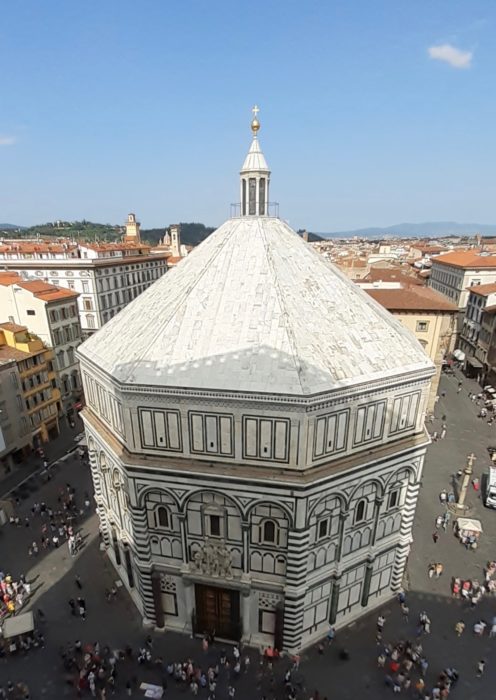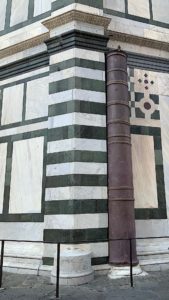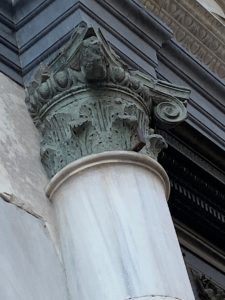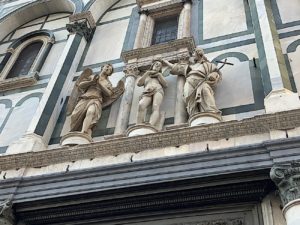
Age
?IV-V or ?XI centuries
Designer
Unknown
The Battistero di San Giovanni, standing in the Piazza di San Giovanni, across the Cattedrale di Santa Maria del Fiore, is one of the oldest religious building in the city. The baptistery has an octagonal plan, typical of the baptisteries, especially medieval and of byzantine inspiration (the number eight is a symbol of regeneration in Christianity, after the six days of creation and the day of rest, it represents the day of re-creation through the Sacrament of Baptism); the baptistery is covered by a dome containing eight segments, resting on the perimeter walls, masked on the outside by the elevation of the walls above the arch of the second level, and by a flattened pyramid roof. Although the baptistery is considered the matrix of the “Florentine Romanesque”, some features of its architecture are in contrast with this style. It was long believed that the baptistery was originally a Roman temple dedicated to Mars, the tutelary god of the old Firenze, modified in the Middle Ages. In the following centuries, however, this idea was gradually abandoned, also because at the end of the 19th century the remains of roman domus, with mosaic floors showing geometric motifs, probably from the 1st century A.D., appeared under the building. This was thought to demonstrate the Medieval origin of the monument, and most current theories are based on this assumption. Currently, the researchers are divided among those who, basing themselves on the classical characteristics of architecture, believe that it is a building of the early Christian Era (IV-V century A.D.), and who, because of the archaeological findings, claims the baptistery dates back to XI century. According to some sources the baptistery was consecrated by Pope Niccolò II on 6 November 1059; in 1128 the building became officially the city baptistery; around the middle of the same century an exterior covering in marble, by using numerous stone pieces coming from various Roman ruins, was executed. The dome was probably built in the second half of the 13th century, but there is no document about it, and technically the hypothesis is highly questionable. The mosaics of scarsella probably date back to 1220 and later, between 1270 and 1300, the complex mosaic of the internal dome with octagonal segments was executed, with the participation of Coppo di Marcovaldo and Cimabue. The bronze doors were made between 1330 and 1452 by important artists such as Andrea Pisano and Lorenzo Ghiberti.
The external cladding is characterized by the the white and green colours; it is made of Marble of various provenance (Apuan Marble, Lasa, Pentelico, Imetto, Cipollino, etc.) and Serpentinite; some small decorations are in Red and Green Porphyry (a igneous silica-rich rock, containing large crystals of feldspars and quartz) and Red Marly Limestone. The roof is realized in Apuan Marble; the columns at the sides of the Est door are made of Red Porphyry, the other columns are realized in Marble Imetto (with capital in Serpentinite) and in Serpentinite (with capital in Marble Imetto).


